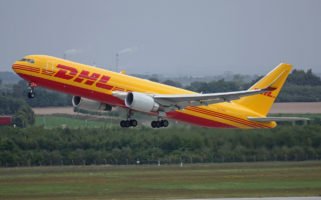IATA says supply chain woes harming airline recovery and sustainability goals
Share
Share

The International Air Transport Association (IATA) says that ongoing supply chain challenges are severely affecting the airline industry, limiting growth opportunities, driving up costs and stalling environmental progress. The outlook for 2025 highlights bottlenecks in aircraft deliveries, aging fleets and elevated leasing rates, all of which are hampering the sector’s recovery and long-term goals.
“Supply chain issues are frustrating every airline with a triple whammy on revenues, costs, and environmental performance,” said Willie Walsh, IATA’s director general. “If we had more aircraft, they could be profitably deployed, but manufacturers’ delays are holding airlines back from capitalizing on demand and improving efficiency.”
Aging fleets and delivery shortfalls
The average age of the global airline fleet has risen to 14.8 years, the highest on record and a significant jump from the pre-pandemic average of 13.6 years. Older aircraft increase maintenance costs, consume more fuel and require higher capital investments to remain operational.
Aircraft deliveries have also slumped, with just 1,254 deliveries projected in 2024, down 30 per cent from initial estimates and far below the 2018 peak of 1,813 planes. While deliveries are expected to rise to 1,802 in 2025, the number remains significantly lower than earlier forecasts of 2,293.
Further compounding the issue, the backlog of unfulfilled aircraft orders has reached a record 17,000 planes. At current delivery rates, it would take 14 years to clear the backlog, compared to the six-year average seen between 2013 and 2019.
Approximately 14 per cent of the global fleet—roughly 5,000 planes—remains parked, a figure still four per cent higher than pre-pandemic levels. Of these, 700 aircraft are grounded due to ongoing engine inspections. This issue is expected to persist into 2025, reducing operational capacity.
The demand for leased aircraft has also surged, pushing leasing rates for narrow-body planes 20-30 per cent higher than in 2019. This increase is exacerbating costs for airlines already grappling with rising interest rates and intense competition for capacity expansion.
Supply chain disruptions are not only affecting financial performance but also slowing progress toward decarbonization. Fuel efficiency improvements, excluding the impact of higher load factors, stagnated between 2023 and 2024, breaking the long-term trend of annual improvements of 1.5-two per cent.
Walsh criticized manufacturers for their role in hindering environmental goals, saying, “Airlines are united in their commitment to net-zero carbon emissions by 2050, but the supply chain is letting us down. Delays in aircraft and engine deliveries are directly impeding the introduction of more fuel-efficient fleets.”
IATA emphasized that supply chain challenges are limiting airlines’ ability to capitalize on record-high load factors and growing demand. Despite these hurdles, passenger and cargo demand remain robust, and airlines are eager to expand capacity to meet it.
“The supply chain bottlenecks must be resolved,” said Walsh. “Manufacturers need to fulfill their commitments to help airlines recover from the pandemic and make meaningful progress toward sustainability.”
The report underscores the urgent need for collaboration across the aviation sector to address these challenges and ensure the industry’s recovery is not derailed by inefficiencies outside airlines’ control.
I’ve read several right stuff here. Certainly worth bookmarking for revisiting. I wonder how much effort you place to create this kind of great informative website.
Leave a Reply